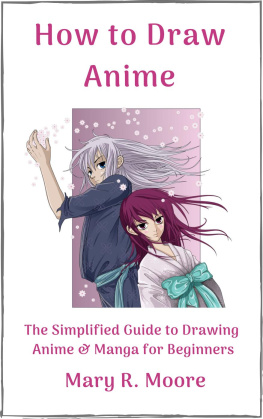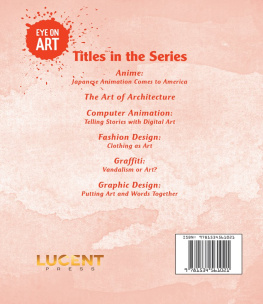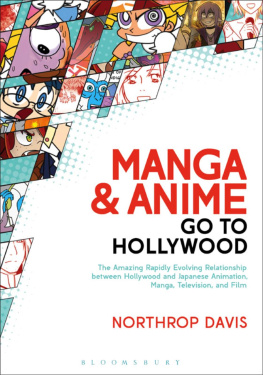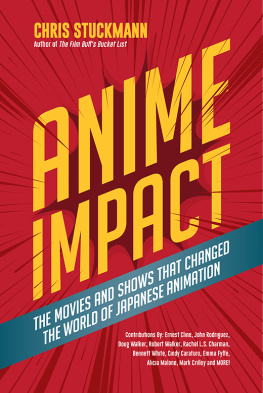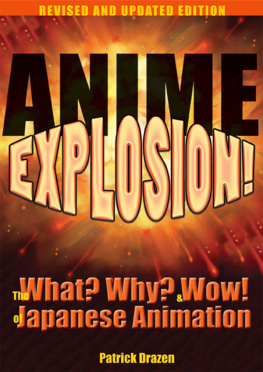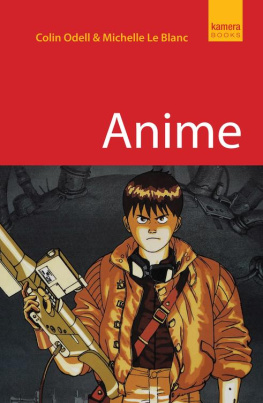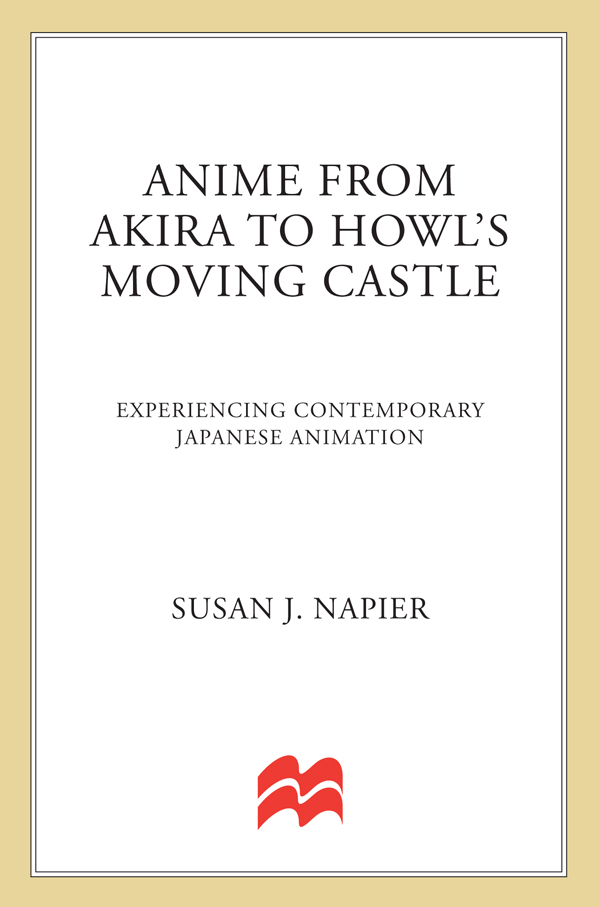Contents
Guide

The author and publisher have provided this e-book to you for your personal use only. You may not make this e-book publicly available in any way. Copyright infringement is against the law. If you believe the copy of this e-book you are reading infringes on the authors copyright, please notify the publisher at: us.macmillanusa.com/piracy.
For Julia
Moon Prism Power!
By the time this updated edition of Anime from Akira to Howls Moving Castle (formerly Anime from Akira to Princess Mononoke ) is published, it will have been five years since the publication of the original edition. Much has happened in the world of anime in that time. To be honest, when I finished writing the first edition, I genuinely wondered if the anime boom might soon reach its peak and become a niche phenomenon, beloved of ardent fans but never becoming mainstream, In fact, almost the opposite has occurred. Anime has increased in popularity to the point where U. S. fans number at least in the hundreds of thousands. I still remember my incredulity a couple of years ago when I was invited to speak at Otakon, one of the largest of the East Coast anime conventions. Going in to register the first morning of the convention, my jaw dropped when I saw an enormous line of people snaking around the Baltimore Convention Center and down the street. Not only did they range in age from 6 to 60, but many of them were colorfully dressed as their favorite anime character. I learned later that 17,000 fans had converged on Baltimore that summer. (The figure rose to 20,000 at the following years convention.) And since then the fan base has continued to expand. Although there are still people who try to edge away when I tell them what I do my research on, these days more often than not the person I am speaking to is either a fan or knows someone close who is.
One of the more striking changes in anime fandom in America over the last few years has been the rise of female fans, not only of anime, but of animes related medium of manga. As the New York Times documents, Manga producers in the United States have tapped into a new audience for comicsthe female consumer. Recent conventions I have attended also attest to animes growing popularity among women. At many consconventionsthe participants seem to be evenly split between the genders, although it is clear that some types of anime may appeal more to one gender than the other. This is most notable in sessions on so-called yaoi (anime and manga with homoerotic themes), where female fans seem to outnumber male fans by at least ten to one. At the same time, however, it should be emphasized that male and female fans exist for virtually any type of anime, including hentai (pornography), which although initially aimed at males, has a surprising number of female adherents. The same can be said from the opposite point of view about shjo (young girl) anime and manga.
Statistics bear further evidence of animes growing popularity among different age groups and sexes. According to the Japan External Trade Organization, 60 percent of all TV cartoons worldwide are anime. Childrens anime programs, such as Yu-Gi-Oh and Pokemon, rank in the top ten of American childrens programming (third and sixth respectively). Even home-grown American cartoons, such as The Power Puff Girls and Hi Hi Puffy AmiYumi, show clear anime inspiration.
As is clear from the works discussed in this book, however, anime is definitely not only for children. According to the Washington Post, [T]he Cartoon Networks late-night Adult Swim segmentwhich heavily features Japanese animeis now the most watched cable block in its time slot for men between 18-34, beating out Jon Stewarts Daily Show, The Tonight Show and Late Show with David Letterman.
Animes popularity continues to extend well beyond America and Japan. The Washington Post notes that a South African company will soon launch a 24-hour anime channel and that Pokemon has become one of the most viewed cartoons in the world, now broadcast in 68 countries. Furthermore, interest in anime reaches well beyond the big cities. In the summer of 2002 I walked into a small newspaper shop in a little town in Burgundy to find five different journals devoted to anime staring at me from the magazine rack.
Anime is also being taken seriously on an aesthetic level. In December 2004 I had the opportunity to see a Parisian exhibition comparing Miyazakis art to that of the popular and enigmatic French comic artist Moebius. Walking into the stunning neoclassical foyer of the Muse de la Monnaie where the exhibition was held, I almost thought I had made a mistake. But sure enough, the second floor of the museum was thronged with young French people looking at scenes from Miyazaki films beneath an ornate nineteenth-century ceiling. The exhibition even included a catalog complete with quotations from Moebius and Miyazaki on art and fantasy. One quote seemed to sum up Miyazakis approach to art and life: Of course I believe that other worlds exist. If they didnt life wouldnt be interesting. Its like love: you cant see it but it existssimply because you believe it. Its just a matter of believing.
Others besides the French have been impressed by Miyazakis art. In 2002 his film Spirited Away ( Sen to Chihiro no Kamikakushi ) won the Academy Award for best animated feature, beating out four American films, including two from Disney. Miyazakis latest film, Howls Moving Castle ( Hauru no Ugoku Shiro ), based on the English fantasy by Diana Wynne Jones, opened in 50 countries in 2005.
But perhaps we should return to the question that Miyazakis statement implicitly raises: Why are more and more people around the world believing in the other world that is anime? Although this is an enormous subject, a few speculations might be appropriate at this point. One is that, in the last few years, fantasy in general has roared back into a prominent place in popular culture. The immense success of books such as the Harry Potter series or films such as The Lord of the Rings trilogy attest to what might be called a global hunger for fantasy. The reasons behind this yearning are no doubt diffuse, but it seems safe to say that the last decade of the twentieth century ushered in an increasing disaffection with technology. Although technology still produces cool products, such as cell phones and DVDs, it seems less able to provide the satisfying future that utopian science fiction used to promise. Problems such as environmental degradation, economic downturns, and war appear increasingly intractable, with science seeming to suggest little in the way of overall solutions.
In addition, in America at least, the events of September 11 have cast a long shadow over the national psyche. It is little wonder that fantasy worlds offering alternatives to the frightening new reality should become increasingly popular.
At the same time it should be emphasized that one of animes important elements is the uniqueness of the medium itself, which may make it particularly appropriate for todays culture in which many participants, especially the computer literate, move seamlessly between the real and the unreal. Paul Wells has stated: Animation is arguably the most important creative form of the twenty-first century. Animation as an art, an approach, an aesthetic and an application informs many aspects of visual culture, from feature-length to prime-time sit-coms; from television and web cartoons to display functions on a range of communications technologies. In short, animation is everywhere.


